This article was co-authored by wikiHow Staff. Our trained team of editors and researchers validate articles for accuracy and comprehensiveness. wikiHow's Content Management Team carefully monitors the work from our editorial staff to ensure that each article is backed by trusted research and meets our high quality standards.
There are 7 references cited in this article, which can be found at the bottom of the page.
wikiHow marks an article as reader-approved once it receives enough positive feedback. In this case, 90% of readers who voted found the article helpful, earning it our reader-approved status.
This article has been viewed 197,396 times.
Learn more...
Controlling your breathing is an important part of any singing endeavour, especially with rapping. When you can’t quite get on top of a verse, it might be due to improper breathing. While much of breath control happens during the rap, there are a variety of exercises you can practice to improve your breathing. You can strengthen your diaphragm, correct for shallow breathing or improve your cardiovascular endurance.
Steps
Strengthening Your Diaphragm
-
1Exhale quickly and steadily until your lungs are completely empty. You’ll feel your chest depress slowly as the air escapes your lungs; this will feel uncomfortable at first but you’ll quickly get used to it.
- Start slowly when first performing this exercise. It’s possible to hurt yourself if you release the air too quickly or too strongly. If you feel discomfort or pain, stop immediately.
-
2Keep your lungs empty for about 5 seconds. In doing this, you are fully extending the muscles in your diaphragm. This helps to condition and strengthen your diaphragm. It will improve your endurance and make you less likely to run out of breath.[1]
- As you hold this position, your reflex will be to inhale. Resist this temptation or you’ll limit the exercise’s effectiveness.
Advertisement -
3Fill up your lungs with a single quick breath. Inhale as soon as you’ve held your breath for 5 seconds. Once your lungs are completely filled with air, hold this position for 10 seconds. Filling your lungs this way helps to expand your lung capacity, meaning you’ll need to take less breaths when you rap.[2]
-
4Take a few (2-3) normal, steady breaths. This helps re-establish normal oxygen levels in preparation for your next repetition. You shouldn’t perform the exercise multiple times back to back without resetting; this could injure your respiratory system.
-
5Repeat this exercise 3 times daily for 20 minute periods. Between the exercise itself and the recuperation between each “rep”, you should be able to perform about 15-20 reps per 20 minute set. Your 3 daily sets don’t necessarily have to be performed one after the other; feel free to perform them throughout the day. For instance, you can perform one when you wake up in the morning, one around lunch and one just before bed.
- If you perform this exercise daily, you should see noticeable results within 4-8 weeks as your diaphragm becomes stronger and more flexible.
- Doing this will allow you to flow stronger for longer periods of time. As you’re not constantly rushing for breath, you’ll sound more confident when performing and have the ability to add more emphasis to your lyrics.
Correcting Shallow Breathing
-
1Lie down in a pushup position. You should be on your stomach, your palms flat on the ground and underneath your shoulders. Keep your spine straight, and lower your head until your neck is aligned with your spine.[3]
-
2Push yourself up and inhale. Press through your hands as you push yourself up. Your upper body should slowly start curving upwards, from your head all the way down to your hips. Keep your body still from the waist down. Inhale the entire time you’re pushing up. Pull your shoulder blades together when you reach the top position, opening your chest further.
- You’ll notice you need to strain slightly to take in a full breath. This opens up the chest and deepens your lung capacity.[4]
-
3Exhale as you return to the starting position. Slowly bring your upper body back down towards the ground, allowing yourself to rest gently on the ground. You should be following the same curve as the previous step. Your chest should touch the ground first, followed by your shoulders, neck, chin and head.[5]
-
4Perform this exercise 10 additional times. You can take a couple of seconds between each repetition to reset properly. You shouldn’t be hurrying as you perform this exercise; the goal is to slowly learn how to control your breathing and expand your lung capacity.
Improving Your Cardiovascular Endurance
-
1Choose the right cardiovascular exercise. Exercise is one of the best ways to improve your lung capacity and your ability to control your breathing. The type of exercise that’s right for you depends on the equipment available to you as well as your limitations. For instance, if you have bad knees, running can cause pain and damage to these vulnerable joints.[6] Some options for cardiovascular exercise include:
- Swimming
- Cycling
- Rowing
-
2Warm up and stretch before exercising. Not warming up properly can lead to a host of injuries, such as pulled muscles and sprained ankles.[7] Perform a light cardiovascular exercise (such as jumping jacks) and stretch.
-
3Sprint, nonstop, for 20 seconds. This means you’re pushing yourself as hard as you can for the entire 20 seconds. Rather than performing low impact cardiovascular training for extended periods of time, you’ll want to use high intensity interval training (HIIT). While both are effective for improving your lung capacity, HIIT workouts are more efficient as they’re usually completed in a fraction of the time.[8]
- If you’re already in good physical shape, you can increase your work time to 30 or 40 seconds for a more strenuous workout.
- If swimming, be careful not to push yourself too hard as you could risk drowning.
-
4Slow down and recover for 40 seconds. After your 20 seconds of work, lower your pace to a point where you’re able to talk and catch your breath. For instance, if you’re running, you’ll slow to a light jog for 40 seconds. The pace should be just enough to keep your heart rate going while still giving you a chance to recover.
- If you’re in good physical shape, try decreasing your recovery time to 30 or 20 seconds.
-
5Repeat this sequence 10 times. The total workout should take approximately 10 minutes to complete.[9] Start by doing this workout a few times a week, and you should notice your lung capacity and breathing improve.
Community Q&A
-
QuestionI'm a kid trying to rap and get quicker, but my mouth sometimes goes to gibberish. What can I do?
 Community AnswerTry to do mouth exercises, like mouthing words. Saying words like "Netflix" and "poptarts" over and over will really help, too, especially if you say them fast.
Community AnswerTry to do mouth exercises, like mouthing words. Saying words like "Netflix" and "poptarts" over and over will really help, too, especially if you say them fast. -
QuestionWhen my son raps, he hardly breathes. Why?
 Community AnswerWhen rapping, he might need to get all the words out fast, leaving him no time to breathe.
Community AnswerWhen rapping, he might need to get all the words out fast, leaving him no time to breathe. -
QuestionHow do I stop mumbling when I rap?
 Community AnswerPractice articulating and enunciating clearly in your everyday speech first. Rap slowly and carefully, then gradually speed it up. Practice as much as you can. The more you practice, the better you'll get at this.
Community AnswerPractice articulating and enunciating clearly in your everyday speech first. Rap slowly and carefully, then gradually speed it up. Practice as much as you can. The more you practice, the better you'll get at this.
References
- ↑ https://teenstarcompetition.co.uk/advice/breath-control-in-singing
- ↑ http://didgeproject.com/didgeridoo-lessons/strengthen-breath-expand-lung-capacity-wind-instruments/
- ↑ http://www.active.com/swimming/articles/3-exercises-to-increase-your-lung-power?page=2
- ↑ http://www.active.com/swimming/articles/3-exercises-to-increase-your-lung-power?page=2
- ↑ http://www.active.com/swimming/articles/3-exercises-to-increase-your-lung-power?page=2
- ↑ http://www.livescience.com/36241-5-experts-answer-running-bad-knees.html
- ↑ http://www.nsmi.org.uk/articles/injury-prevention/warming-up.html
- ↑ https://www.ncbi.nlm.nih.gov/pubmed/22194005
- ↑ http://www.muscleandfitness.com/workouts/workout-tips/10-minute-treadmill-blast?page=2
About This Article
You can improve your breath control and rap faster for longer with a simple breathing exercise. Start by exhaling as quickly as you can until your lungs are empty. Count for 5 seconds, then inhale fully in a single breath. Finally, take 3 normal breaths to bring your oxygen levels back to normal. Repeat the exercise for 15 to 20 reps 3 times a day or whatever you’re comfortable with. This will help strengthen your diaphragm and help you rap for longer without taking a breath. You should start to see results within a few weeks. You can also improve your lung capacity by doing regular cardio exercise, like swimming, cycling, rowing, and jogging. For more tips, including how to improve your breathing if it’s too shallow, read on!
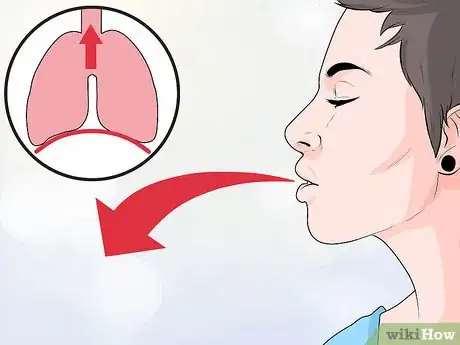

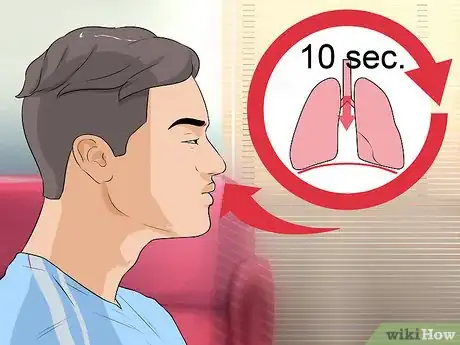
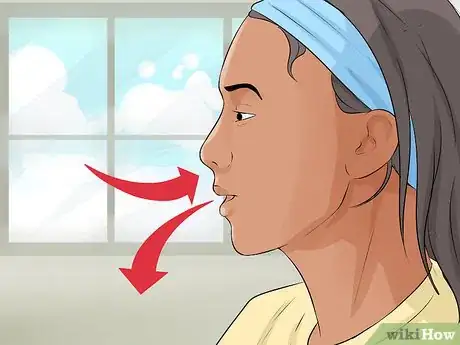
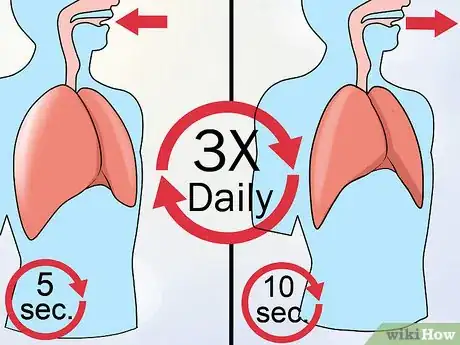
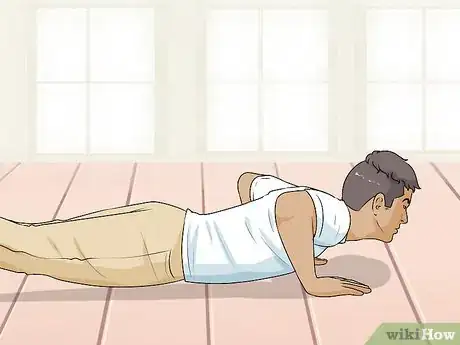
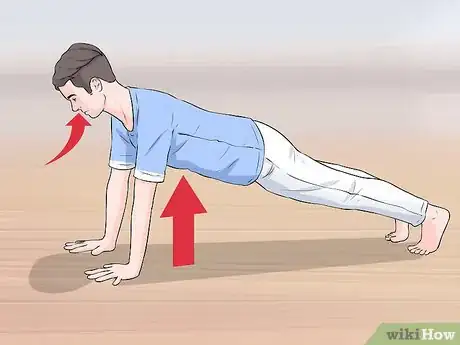
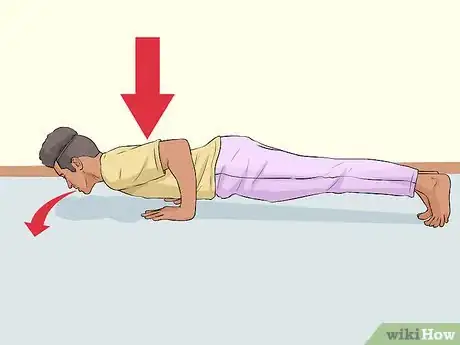



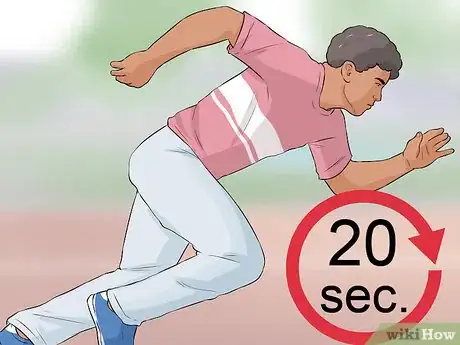
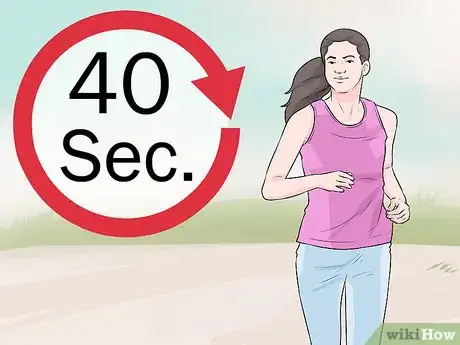
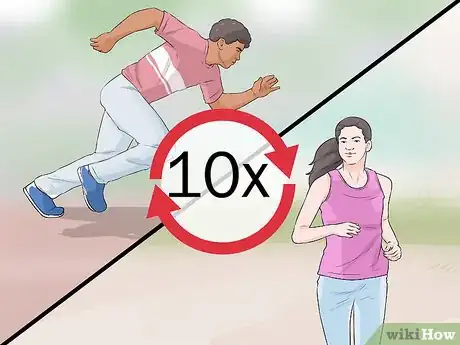



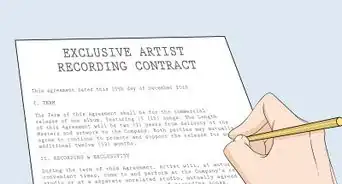


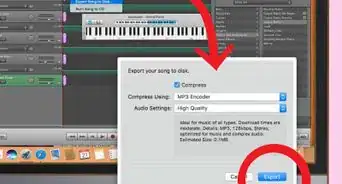























































Medical Disclaimer
The content of this article is not intended to be a substitute for professional medical advice, examination, diagnosis, or treatment. You should always contact your doctor or other qualified healthcare professional before starting, changing, or stopping any kind of health treatment.
Read More...